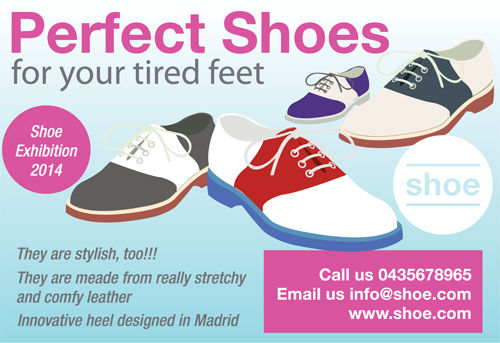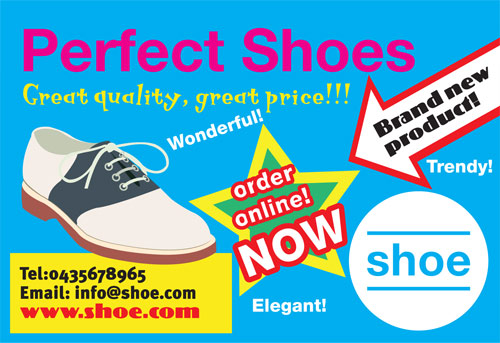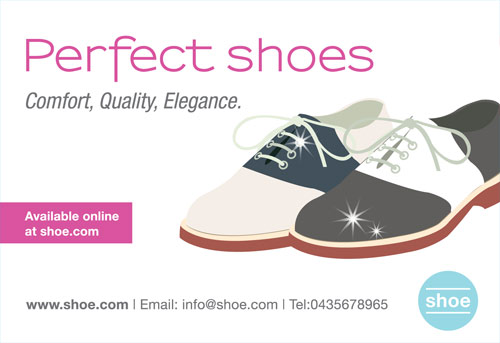


09th June 2014
Sofia Stergiopoulou, Studio Designer.
Looks at the essential elements to create a productive design solution
Looks at the essential elements to create a productive design solution
Eye-catching design – the Necessity of Simplicity
Trying to communicate a product or a service can be tricky. There's a vast sea of designs out there that your product has to compete with and win in order to get attention. Not only that, but we are also required to explain how a product works and why it is better than all the others next to it in extremely limited space and time. Some companies manage to do that perfectly, others don't. Some of them might manage to get attention to their product, only to be rejected. It is true, there is a lot of room for errors but here's the good news: there's only a small set of basic rules to remember!

1. Don't be afraid of empty space
Empty space is really crucial in a design. One of the greatest design mistakes is filling all given space with copy, images and design elements. The human eye avoids anything that might tire it – too much detail, a complicated structure without specific limits, too many colours and flashes, or in other words: too much information! All the information in a design needs to be broken into smaller pieces with adequate room around them. In that way the eye can easily travel from one unit to the other without getting confused and tired.

2. Say “no” to “BIGGER! BRIGHTER! BOLDER!”
The key to a good design is balance. I am not talking about creating something plain and boring. Having balance in a design, means having consistency throughout with your choice of fonts, font size and the way you highlight important parts. It is good to highlight a few things with a flash or a boxout – but keep it as minimal as possible. There is a great chance that the third flash added, which is bigger and brighter than the previous two will “bury” the rest of the design altogether. On a different level, a very bright and busy design shows insecurity and can seriously undermine your image of quality, loyalty and dependability.
3. Be selective in what you need to say
When creating an advertisement, there is a strong temptation to cite as much info as you can fit in the space given, be it product details or product images. But an advertisement is not a product guide, nor an encyclopedia. It is a small space used to get attention to a product. And that's what matters most. We live in a fast-paced environment in which people have developed a small attention span. We are letting information in more regularly, but only a small amount each time. So basically, if you manage to get someone's attention, assume that you only have two seconds of their time. So what you need is a beautiful, eye-catching design. A nice product image. Something interesting. Then state the most important things you can in two seconds – contact details included. If there's space left, you can add more, but never sacrifice the whole design for information that quite possibly will never be read.

4. Trust your designer
The designer profession is often underestimated, which is not surprising. In the past decades with the widespread availability of computers and design programs people can create things easily on their own. It's easy to just click and change the colour of something. But is this what makes a designer?
Absolutely not. We train hard to learn and apply rules like the ones above, we spend lots of time researching and observing, making sure that the service we offer is up-to-date and smart. And more importantly, with the time we spend designing, our minds become accustomed to seeing grids and patterns in everything – that's why we might voice concern over your suggestions from time to time without even testing them. But we are here to listen to you and your thoughts. We take them under serious consideration and work towards incorporating them the best way we can. When we recommend against something, it's just because we really care about your design. We know that the strongest trait of a designer is empathy, and we also know that our success comes directly from your success.
Trying to communicate a product or a service can be tricky. There's a vast sea of designs out there that your product has to compete with and win in order to get attention. Not only that, but we are also required to explain how a product works and why it is better than all the others next to it in extremely limited space and time. Some companies manage to do that perfectly, others don't. Some of them might manage to get attention to their product, only to be rejected. It is true, there is a lot of room for errors but here's the good news: there's only a small set of basic rules to remember!

1. Don't be afraid of empty space
Empty space is really crucial in a design. One of the greatest design mistakes is filling all given space with copy, images and design elements. The human eye avoids anything that might tire it – too much detail, a complicated structure without specific limits, too many colours and flashes, or in other words: too much information! All the information in a design needs to be broken into smaller pieces with adequate room around them. In that way the eye can easily travel from one unit to the other without getting confused and tired.

2. Say “no” to “BIGGER! BRIGHTER! BOLDER!”
The key to a good design is balance. I am not talking about creating something plain and boring. Having balance in a design, means having consistency throughout with your choice of fonts, font size and the way you highlight important parts. It is good to highlight a few things with a flash or a boxout – but keep it as minimal as possible. There is a great chance that the third flash added, which is bigger and brighter than the previous two will “bury” the rest of the design altogether. On a different level, a very bright and busy design shows insecurity and can seriously undermine your image of quality, loyalty and dependability.
3. Be selective in what you need to say
When creating an advertisement, there is a strong temptation to cite as much info as you can fit in the space given, be it product details or product images. But an advertisement is not a product guide, nor an encyclopedia. It is a small space used to get attention to a product. And that's what matters most. We live in a fast-paced environment in which people have developed a small attention span. We are letting information in more regularly, but only a small amount each time. So basically, if you manage to get someone's attention, assume that you only have two seconds of their time. So what you need is a beautiful, eye-catching design. A nice product image. Something interesting. Then state the most important things you can in two seconds – contact details included. If there's space left, you can add more, but never sacrifice the whole design for information that quite possibly will never be read.

4. Trust your designer
The designer profession is often underestimated, which is not surprising. In the past decades with the widespread availability of computers and design programs people can create things easily on their own. It's easy to just click and change the colour of something. But is this what makes a designer?
Absolutely not. We train hard to learn and apply rules like the ones above, we spend lots of time researching and observing, making sure that the service we offer is up-to-date and smart. And more importantly, with the time we spend designing, our minds become accustomed to seeing grids and patterns in everything – that's why we might voice concern over your suggestions from time to time without even testing them. But we are here to listen to you and your thoughts. We take them under serious consideration and work towards incorporating them the best way we can. When we recommend against something, it's just because we really care about your design. We know that the strongest trait of a designer is empathy, and we also know that our success comes directly from your success.
© 2012 Publicity Overload Ltd. Registered in England and Wales, Company Number 4407167.


020 8952 6400